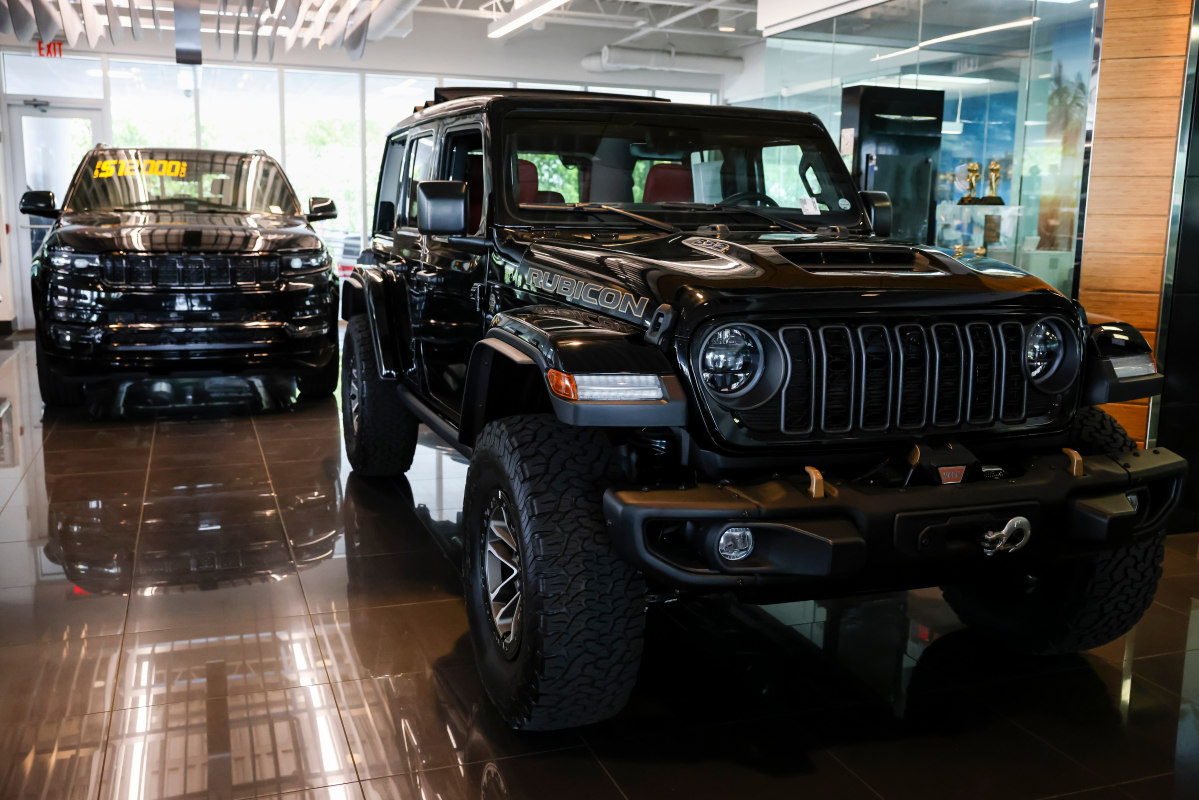Trump gives automakers some tariff relief for domestic production
President Trump has signed an executive order easing the impact of his 25% tariffs on vehicle imports, which took effect April 3, and auto parts, which is scheduled to begin on May 3. The new legislation states that 25% tariffs will remain on all vehicle imports except for United States-Mexico-Canada Agreement (USMCA) exempt cars. Auto parts from Mexico and Canada compliant with the USMCA agreement will also remain exempt.
However, Trump’s new executive order prevents multiple U.S. tariffs from being stacked on the same imported product for companies making vehicles in the U.S. For example, a car or auto part that’s subject to the 25% tariffs would not face additional levies on steel or aluminum. Matt Brannon, a data journalist for Insurify, said: “Steel makes up about 54% of the average vehicle, according to the American Iron and Steel Institute. Aluminum is also a big factor—roughly half of all aluminum in the US that is used is imported, and the vast majority of that aluminum comes from Canada.” NBC reports. However, Kelley Blue Book notes that The American Iron and Steel Institute estimated in February that just 21% of the steel used in American manufacturing was imported.
Getty
Rebates are on the way as well, but only for a limited time
Trump’s executive order also gives carmakers partial rebates on tariffs paid for imported parts at 3.75% during the first year and 2.5% the second year before being phased out, with the offset available for cars produced after April 3. The President’s changes apply retroactively to imports since his tariffs took effect, so any overpaid levies due to stacking will be refunded. The White House’s official Rapid Response X account, formerly Twitter, posted today’s executive order, which reads: “I [President Trump] have now determined that, to the extent these tariffs apply to the same article, these tariffs should not all have a cumulative effect (or ‘stack’ on top of one another) because the rate of duty resulting from such stacking exceeds what is necessary to achieve the intended policy goal.” Trump’s intended policy goal with the auto levies is to protect national security and stimulate domestic car production, which he believes will help the country prosper.
However, when asked if he thought this prosperity would materialize through Trump’s tariffs, viral auto influencer Scotty Kilmer, who has been a mechanic for nearly 60 years, told Autoblog: “It’s all for show; it’s not gonna change dramatically because it costs too much money to manufacture in this country. Even the Japanese are doing it in Japan. They’re farming a lot out because it costs too much to build in Japan. That’s just the natural capitalistic migration of money, and these tariffs aren’t going to affect it all.”

Getty
Final thoughts
The public initially expressed concerns that Trump’s auto tariffs would hurt domestic carmakers, so the President’s actions on Tuesday afternoon seem to address these worries. Still, while President Trump’s executive order offering domestic automakers relief from tariff stacking could provide industry stabilization, it’s unclear whether or not the measure will make a significant enough impact against the core 25% levies that remain intact.